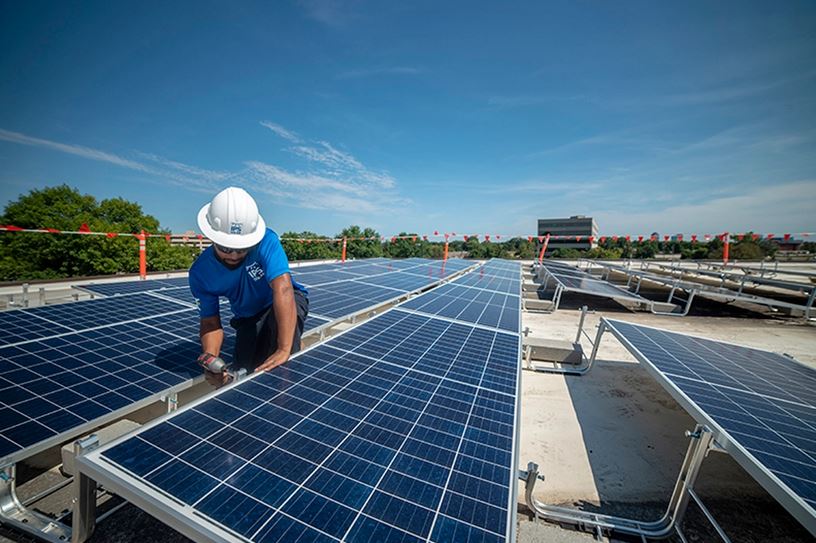Rooftop
solar mounting systems installations are heavily penalized in Cambodia, with solar arrays capped at 50% of the contracted load and charged a monthly capacity fee. At the end of April, the nation's Ministry of Mines and Energy published a document, “Principles for permitting the use of rooftop solar power in Cambodia” that outlines new principles to streamline the permitting process of rooftop PV. It proposes the replacement of actual capacity charges with new tariffs and quotas for installations.
The changes are a response to the garment industry’s wish to install more rooftop solar to “reduce the carbon footprint of goods and products,” as required by international buyers, according to the document. The brief repeatedly emphasizes the government’s belief that utility-scale solar is the best way to reduce electricity prices for all consumers and minimize grid instability issues. It thus introduces a “compensation tariff of variable energy from rooftop solar” under the principle of “fairness in electricity price among all parties.”
The new tariff is calculated according to a formula with three parts. The first is the price of exporting electricity from the national grid, payable to the electricity distributor. The second is the price equivalent to grid losses, payable to the state-owned utility Electricite du Cambodge (EDC). The third is a tariff based on the levelized cost of electricity (LCOE) for each installation.

Asked whether the new tariff is a positive development for solar in Cambodia, Natharoun Ngo Son, country director at Energy Lab, gave pv magazine an ambivalent answer.
“Yes and no. Yes, it is better, because with the capacity charges, first there is a 50% cap, and then the capacity charge applies whether you use your system or not,” said Ngo Son. “Now, the tariff is paid on a usage base, which is better. Moreover, before injecting excess electricity into the grid wasn’t allowed and now it is.”
However,
PV mounting system owners injecting power into the grid would do it for free, as net metering and net billing are not allowed in Cambodia. Ngo Son argued that grid constraints, among other issues, mean it is unlikely that public utilities will implement such regulatory accelerators soon.
Ngo Son expressed concerns about the other side of the new tariff, stating that “no, it is not necessarily better. The big question we all have is: We have a formula, but what does it mean? What is the real cost the private sector will end up paying? No business today understands what the new regulations mean in terms of cents per kWh and therefore in terms of payback period. Some solar PV actors noted that it has slowed down their current operations and created uncertainty.”
